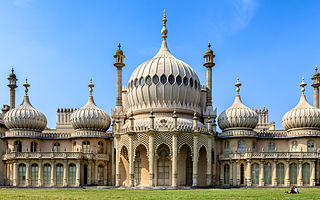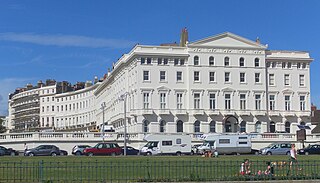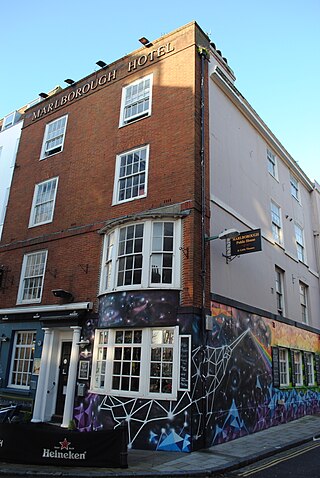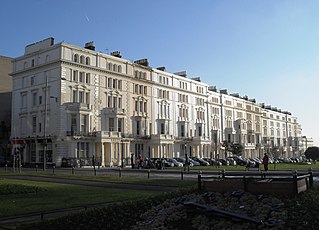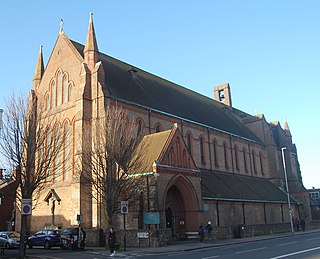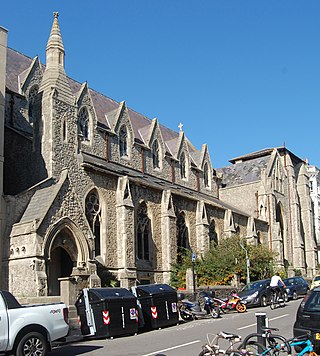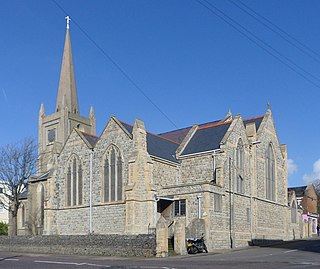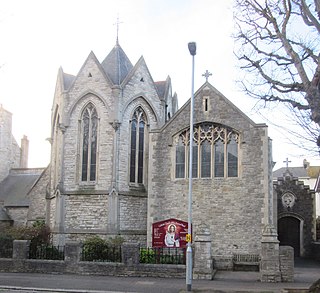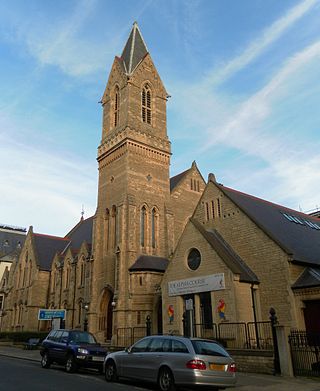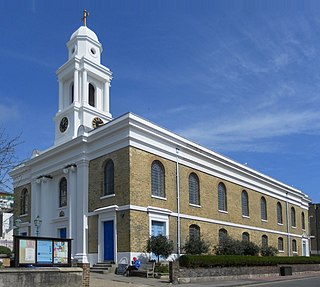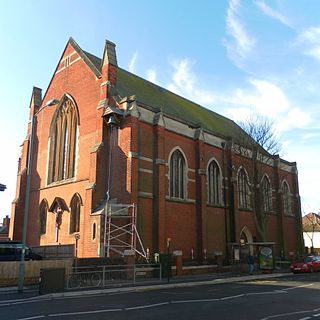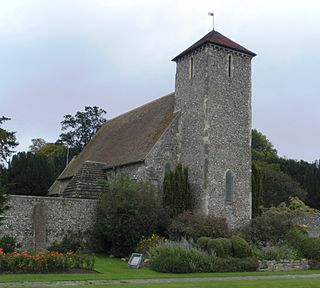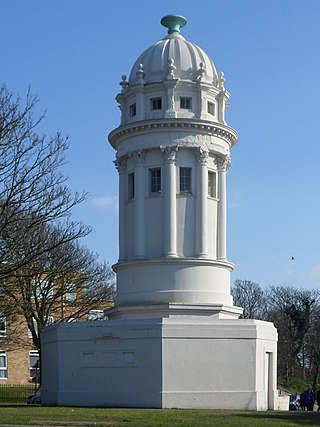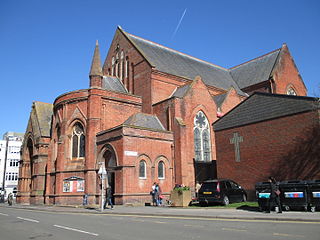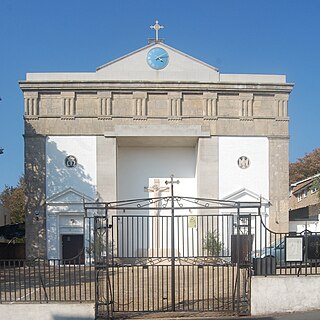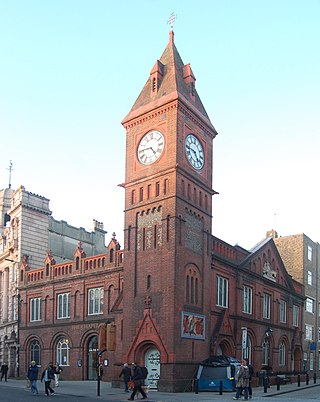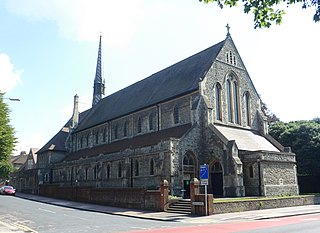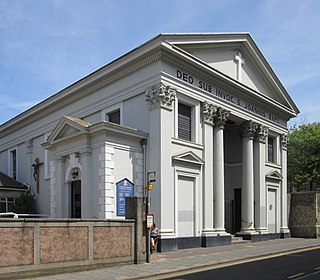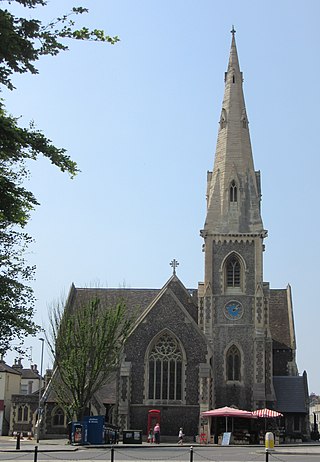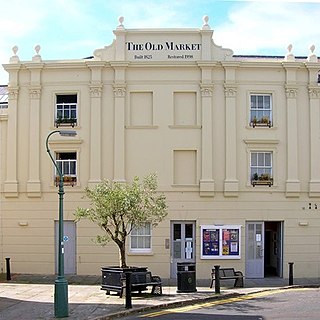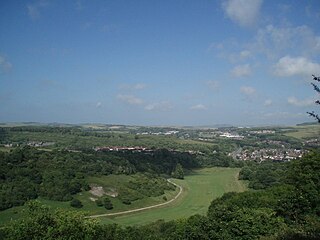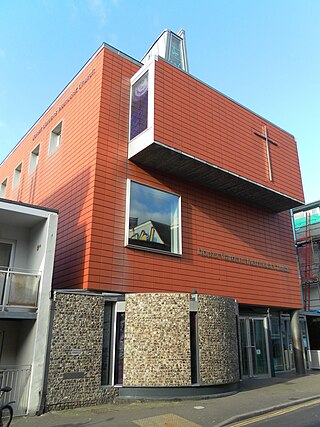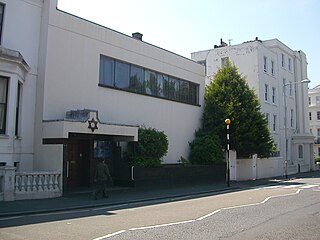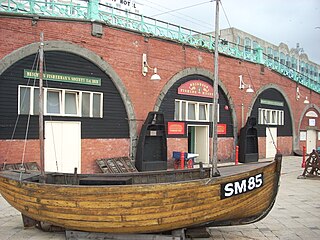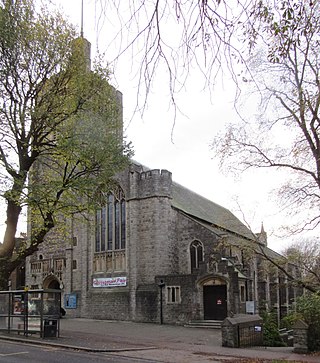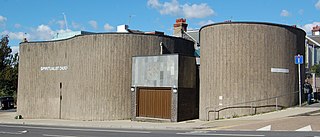33 Sights in Brighton, United Kingdom (with Map and Images)
Legend
Welcome to your journey through the most beautiful sights in Brighton, United Kingdom! Whether you want to discover the city's historical treasures or experience its modern highlights, you'll find everything your heart desires here. Be inspired by our selection and plan your unforgettable adventure in Brighton. Dive into the diversity of this fascinating city and discover everything it has to offer.
Sightseeing Tours in BrightonActivities in Brighton
The Brighton Palace Pier, commonly known as Brighton Pier or the Palace Pier, is a Grade II* listed pleasure pier in Brighton, England, located in the city centre opposite the Old Steine. Established in 1899, it was the third pier to be constructed in Brighton after the Royal Suspension Chain Pier and the West Pier, but is now the only one still in operation. It is managed and operated by the Eclectic Bar Group.
Brighton Museum & Art Gallery is a municipally-owned public museum and art gallery in the city of Brighton and Hove in the South East of England. It is part of Brighton & Hove Museums. It costs £9.50 for a yearly pass, discounted to £7 for Brighton and Hove residents and students at local universities.
The West Pier is a ruined pier in Brighton, England. It was designed by Eugenius Birch and opened in 1866. It was the first pier to be Grade I listed in England but has become increasingly derelict since its closure to the public in 1975. As of 2024 only a partial metal framework remains.
4. Royal Pavilion
The Royal Pavilion and surrounding gardens is a Grade I listed former royal residence located in Brighton, England. Beginning in 1787, it was built in three stages as a seaside retreat for George, Prince of Wales, who became the Prince Regent in 1811, and King George IV in 1820. It is built in the Indo-Saracenic style prevalent in India for most of the 19th century. The current appearance, with its domes and minarets, is the work of the architect John Nash, who extended the building starting in 1815. George IV's successors William IV and Victoria also used the Pavilion, but Queen Victoria decided that Osborne House should be the royal seaside retreat, and the Pavilion was sold to the city of Brighton in 1850.
5. Adelaide Crescent
Adelaide Crescent is a mid-19th-century residential development in Hove, part of the English city and seaside resort of Brighton and Hove. Conceived as an ambitious attempt to rival the large, high-class Kemp Town estate east of Brighton, the crescent was not built to its original plan because time and money were insufficient. Nevertheless, together with its northerly neighbour Palmeira Square, it forms one of Hove's most important architectural set-pieces. Building work started in 1830 to the design of Decimus Burton. The adjacent land was originally occupied by "the world's largest conservatory", the Anthaeum; its collapse stopped construction of the crescent, which did not resume until the 1850s. The original design was modified and the crescent was eventually finished in the mid-1860s. Together with the Kemp Town and Brunswick Town estates, the crescent is one of the foremost pre-Victorian residential developments in the Brighton area: it has been claimed that "outside Bath, [they] have no superior in England". The buildings in the main part of Adelaide Crescent are Grade II* listed. Some of the associated buildings at the sea-facing south end are listed at the lower Grade II.
6. The Marlborough Theatre
The Marlborough Pub and Theatre is a historic venue, situated at 4 Princes Street, Brighton. It has been associated, since the 1970s, with the LGBT community. The Marlborough's small theatre presents drama, cabaret and music throughout the year, including during the Brighton Fringe Festival, LGBT History Month and Brighton Pride Arts Festival. The pub reopened in 2021 as 'The Actors'.
7. Palmeira Square
Palmeira Square is a mid-19th-century residential development in Hove, part of the English city and seaside resort of Brighton and Hove. At the southern end it adjoins Adelaide Crescent, another architectural set-piece which leads down to the seafront; large terraced houses occupy its west and east sides, separated by a public garden; and at the north end is one of Hove's main road junctions. This is also called Palmeira Square, and its north side is lined with late 19th-century terraced mansions. Commercial buildings and a church also stand on the main road, which is served by Brighton & Hove bus routes 1, 1A, N1, 2, 5, 5A, 5B, N5, 6, 25, 46, 49, 60, 71, 71A and 96.
8. The Hanbury
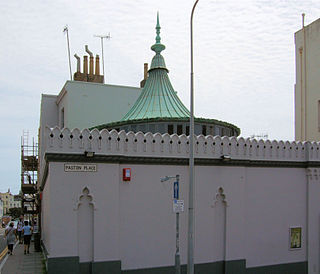
The Sassoon Mausoleum is the former grave of Sir Albert Sassoon and other members of his family, including Sir Edward Sassoon, 2nd Baronet, of Kensington Gore. It stands at 83 St. George's Road in Brighton, England. The single-storey building, which is Grade II listed, has since served as a furniture depository and an air-raid shelter, and since being purchased by a brewery in 1949 has remained a pub or bar.
9. St Ann's Well Gardens
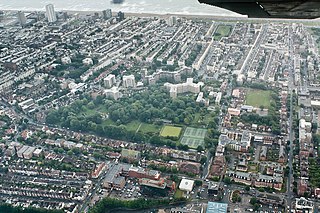
St. Ann's Well Gardens is a park in Hove, East Sussex, about half a mile from the shore. The park is renowned for its chalybeate spring, which is now named St. Ann's Well. In this case, the name "St. Ann" does not refer to any saint. Instead, the name was apparently based on a myth of Annafrieda, a Saxon lady whose lover was murdered. Her tears miraculously became the Chalybeate Spring which is now called St. Ann's Well.
10. Saint Martin's Church
St Martin's Church is an Anglican church in Brighton, England, dating from the mid-Victorian era. It is located on Lewes Road in the Round Hill area of the city, northeast of the city centre and approximately 1.1 miles (1.8 km) north of the seafront. It is the largest church in Brighton by capacity and is noted for its ornate interior.
11. St Patrick's Church
St Patrick's Church is an Anglican church in Hove, in the English city of Brighton and Hove. Situated on a narrow site at 3 Cambridge Road, off Western Road close to the boundary with Brighton, it is still in use as a place of worship. Since 1985 St Pat's developed a special ministry with homeless people, setting up a night shelter and a homeless hostel. In 2012, St Patrick's night shelter was closed. The homeless hostel continues to operate under new management, and is currently run by Riverside Housing Association. The church closed as a parish in 2015, and was then entrusted by the Bishop of Chichester to the Chemin Neuf Community under a Bishop's Mission Order. The leader of the Chemin Neuf Mission at St Patrick's is currently the Revd Tim Watson.
12. St Mark's
St Mark's Church is a former Anglican church in the Kemptown area of Brighton, part of the English city of Brighton and Hove. Originally intended as the private chapel of the adjacent St Mary's Hall school, it was partly built in 1838 at the request of Frederick Hervey, 1st Marquess of Bristol; but arguments over whether or not it should also be open to the public delayed its completion for more than 10 years. It became the parish church of Kemptown in 1873, but declining attendances resulted in a declaration of redundancy in 1986. At that time it was taken over by the school and became its chapel, nearly 150 years after this was first proposed. The Early English-style stone and concrete structure has been criticised by architectural historians, but has been listed at Grade II by English Heritage for its architectural and historical importance.
13. Church of the Sacred Heart
The Church of the Sacred Heart is a Roman Catholic church in Hove, part of the English city of Brighton and Hove. It is the oldest of Hove's three Roman Catholic churches, and one of eleven in the city area. It has been designated a Grade II Listed building.
14. Holland Road Baptist Church
Holland Road Baptist Church is a Baptist church in Hove, part of the English city of Brighton and Hove. Built in 1887 to replace a temporary building on the same site, which had in turn superseded the congregation's previous meeting place in a nearby gymnasium, it expanded to take in nearby buildings and is a landmark on Holland Road, a main north–south route in Hove. It is one of ten extant Baptist church buildings in the city, and is the only one to have been listed by English Heritage in view of its architectural importance.
15. St. George's
St George's Church is an Anglican church in the Kemptown area of Brighton, in the English city of Brighton and Hove. It was built at the request of Thomas Read Kemp, who had created and financed the Kemp Town estate on the cliffs east of Brighton in the early 19th century, and is now regarded as the parish church of the wider Kemptown area. It is a Grade II listed building.
16. St Mary and St Abraam Church
St Mary and St Abraam Church is a Coptic Orthodox Church in Hove, in the English city of Brighton and Hove. It is one of 27 such churches in the British Isles, twelve of which are British Orthodox churches. The Race community in Brighton and Hove was founded in 1990; four years later it moved to its present site on Davigdor Road, on the Brighton/Hove border.
Wikipedia: St Mary and St Abraam Coptic Orthodox Church, Hove (EN), Website
17. St Peter's Church, Preston Park
St Peter's Church is a former Anglican church in the Preston Village area of Brighton, in the English city of Brighton and Hove. The 13th-century building, standing on the site of two older churches, was restored in the late 19th century and again after a serious fire in 1906. It was the parish church of Preston until 1908, when the newly built St John the Evangelist's Church gained this status. The Diocese of Chichester declared St Peter's redundant in 1990, and it is now owned by the Churches Conservation Trust. It has Grade II* listed status, reflecting its architectural and historical importance.
18. Pepper Pot
The Pepper Pot, also known as the Pepperpot, the Pepper Box or simply The Tower, is a listed building in the Queen's Park area of the English city of Brighton and Hove. It was designed and built in 1830 by architect Charles Barry in the grounds of a villa, which was built for the owner of Queen's Park. It survived the villa's demolition and is now one of its only surviving remnants. Its original purpose is unknown, but several possible explanations have been given for its construction. It has had a wide variety of uses in the 20th century, and is now owned by Brighton and Hove City Council, protected as a Grade II listed building.
19. St Mary the Virgin
St Mary's Church is an Anglican church in the Kemptown area of Brighton, in the English city of Brighton and Hove. The present building dates from the late 1870s and replaced a church of the same name which suddenly collapsed while being renovated. The Gothic-style red-brick building, whose style resembles Early English revival and French Gothic revival, is now a Grade II* listed building, and remains in use despite threats of closure.
20. Greek Orthodox Church of the Holy Trinity
The Church of the Holy Trinity is a Greek Orthodox church in Brighton, part of the English city of Brighton and Hove. Built in 1838 in one of Brighton's most notorious slum districts, Carlton Hill, it was an Anglican church for most of its life: dedicated to St John the Evangelist, it was used by the Anglican community until it was declared redundant in 1980. After some uncertainty about its future, it was sold to Brighton's Greek Orthodox community in 1985 and has been used as their permanent place of worship since then. Reflecting its architectural and historical importance, it has been listed at Grade II since 1971.
Wikipedia: Greek Orthodox Church of the Holy Trinity, Brighton (EN)
21. Chapel Royal
The Chapel Royal is an 18th-century place of worship in the centre of Brighton, part of the English city of Brighton and Hove. Built as a chapel of ease, it became one of Brighton's most important churches, gaining its own parish and becoming closely associated with the Prince Regent and fashionable Regency-era society. It remains an active church.
22. St. John the Evangelist Church
St John the Evangelist's Church is an Anglican church in the Preston Village area of Brighton, in the English city of Brighton and Hove. The Grade II listed building, designed by Sir Arthur Blomfield, was started in 1901 but did not take its present form for another quarter of a century. In the meantime, the nearby parish church of Preston was severely damaged by fire, and the new church was granted the parish church status which it still retains.
Wikipedia: St John the Evangelist's Church, Preston Village (EN)
23. St John the Baptist's
St John the Baptist's Church is a Roman Catholic church in the Kemptown area of the English city of Brighton and Hove. It was the first Roman Catholic church built in Brighton after the process of Catholic Emancipation in the early 19th century removed restrictions on Catholic worship. Located on Bristol Road, a main road east of the city centre, it is one of 11 Catholic churches in Brighton and Hove. The Classical-style building, which was funded by Maria Fitzherbert and completed in 1835, has been listed at Grade II* by English Heritage for its architectural and historical importance.
24. St John the Baptist
St John the Baptist's Church is an Anglican church in Hove, part of the English city of Brighton and Hove. It was built between 1852 and 1854 to serve the community of the Brunswick area of Hove, which had originally been established in the 1830s.
25. Brighton Unitarian Church
The Brighton Unitarian Church, previously known as Christ Church, is a Unitarian chapel in Brighton, England. Built in 1820 by prolific local architect Amon Henry Wilds on land sold to the fledgling Unitarian community by the Prince Regent, the stuccoed Greek Revival building occupies a prominent position near the corner of Church Road and New Road in the centre of Brighton, near the Royal Pavilion and the city's main theatres. It has had Grade II listed status since 1952. It is a member of the General Assembly of Unitarian and Free Christian Churches, the umbrella organisation for British Unitarians.
26. The Old Market
The Old Market, Hove is a historic building on the border of Brighton and Hove in England. It has served various functions, currently operating as an independent mixed-arts venue under the name "TOM – The Old Market".
27. Moulsecoomb Wild Park
Wild Park is a 239.8-hectare (593-acre) Local Nature Reserve adjacent to Lewes Road in Brighton, East Sussex. It is owned and managed by Brighton and Hove City Council. It includes Hollingbury Castle, an Iron Age hillfort which is a Scheduled Monument, and Hollingbury Park golf course.
28. Dorset Gardens Methodist Church
The Dorset Gardens Methodist Church is a Methodist church in the Kemptown area of the city of Brighton and Hove, England. Although it is a modern building—completed in 2003—it is the third Methodist place of worship on the site: it replaced an older, larger church which was in turn a rebuilding of Brighton's first Methodist church. Between them, the churches have played an important part in the history of Methodism in Brighton.
29. Hove Progressive Synagogue
Brighton and Hove Progressive Synagogue, also known as Adat Shalom Verei’ut, is a Liberal Jewish congregation and synagogue, located in Hove, Sussex, England, in the United Kingdom. The congregation was established in 1935 and as of 2016 had more than 300 members. Services are held weekly on Friday evenings and Saturday mornings and also at the major Jewish festivals.
30. Brighton Fishing Museum
The Brighton Fishing Museum is a registered independent museum established in co-operation with the local fishing community in 1994. This museum is dedicated to Brighton's fishing and seaside history. It is located a short distance to the west of Brighton Pier within an area known as the Fishing Quarter, occupying two of the arches on the Kings' Road, which runs along Brighton's beachfront. Admission is free and donations appreciated.
31. Brighton Dome Studio Theatre
The Brighton Dome Studio Theatre is a theatre in Brighton, England. It is part of the wider Brighton Dome complex of buildings. It was built in 1935, originally as a supper room, but later converted into a theatre. Its audience capacity is 232 seated or 350 standing.
32. St Mary's Catholic Church
St Mary's Church is a Roman Catholic Parish church in the Preston Village area of Brighton and Hove, East Sussex, England. It was built from 1910 to 1912 in the Arts and Crafts style of Gothic Revival architecture. It is situated on the Surrenden Road on the corner with Preston Drove opposite Preston Park. It was designed by Percy Aiden Lamb, a student of Edward Goldie, and is a Grade II listed building.
33. Brighton National Spiritualist Church
Brighton and Hove National Spiritualist Church, known until 2019 as Brighton National Spiritualist Church, is a Spiritualist place of worship in the Carlton Hill area of Brighton, part of the English seaside city of Brighton and Hove. Since its amalgamation with another church in the city in November 2019, it has been one of England's largest Spiritualist churches.
Wikipedia: Brighton and Hove National Spiritualist Church (EN), Website
Share
How likely are you to recommend us?
Disclaimer Please be aware of your surroundings and do not enter private property. We are not liable for any damages that occur during the tours.


